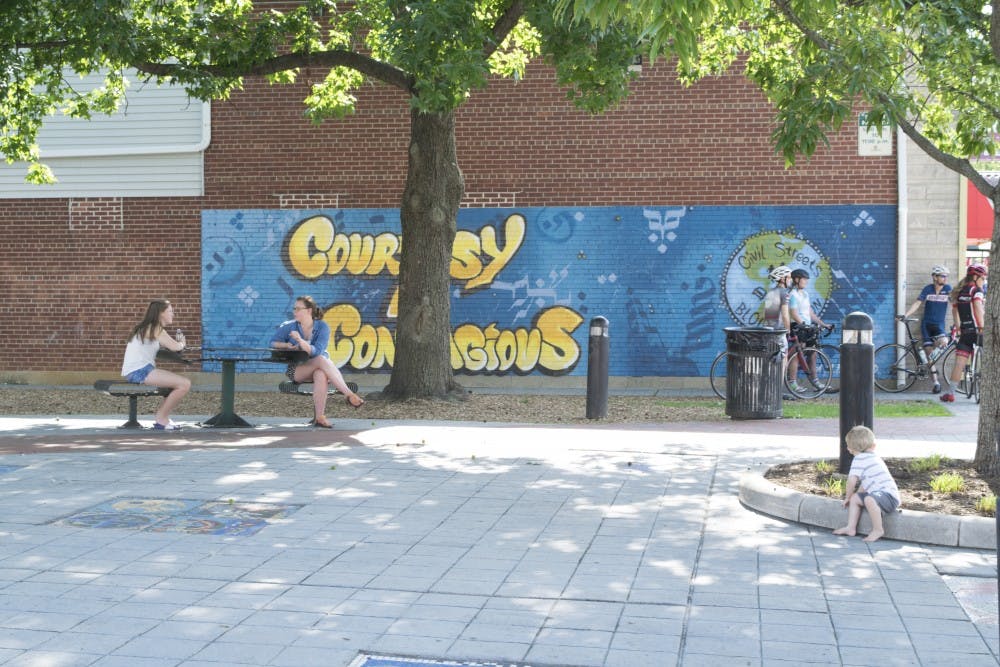People’s Park, a public space known to residents as a gathering place for Bloomington’s homeless population, saw a change in population this summer. Increased complaints from business owners and visitors of drug use, drug dealing, fighting and harassment prompted the Bloomington Police Department to change their approach to the location. It was time to “dramatically increase our presence,” BPD Captain Steve Kellams said.
BPD began increasing their presence in the downtown area, including People’s Park, in June. Temporarily using part-time IUPD officers and parking enforcement staff to increase patrol numbers, BPD saw a “marked difference” in the downtown area.
Rather than stay at People’s Park and potentially receive citations, the homeless population moved, said Forrest Gilmore, the executive director of the Shalom Community Center.
“They weren’t evicted at all,” he said. “They just chose to leave because of the police presence.”
The challenge with that, Gilmore said, is the homeless population has to move somewhere. In the weeks after the increase in police presence, the homeless population found shelter in abandoned buildings, alleys and forests.
Most visibly, individuals camped out two blocks west of People’s Park in the 200 block of Kirkwood Avenue. There, Gilmore said, a lot of them were woken up in the middle of the night by law enforcement.
And although there are shelters in Bloomington to accommodate homeless people – the Shalom Community Center itself, the Wheeler Shelter for Men and its partner shelter for women and children and the New Hope Family Shelter – there isn’t enough space for everyone. Homeless people are struggling with not having a safe space to sleep, Gilmore said.
“It’s a difficult time to be homeless,” he said.
The increased number of police wasn’t to target the homeless population, Kellams said.
“This isn’t to do with the homelessness at all. This is about criminal behavior.”
The Shalom Community Center recently received the numbers on homelessness in Bloomington. On any given day, Bloomington has 333 homeless people on its streets. This is a slight decline from 2016, when there were 340 homeless people in Bloomington.
For Gilmore, the slight decline between 2016 and 2017 is significant not in numbers, but in what it says about the current situation in downtown Bloomington.
“It tells me that what we’re seeing on Kirkwood is not the product of growing homelessness,” Gilmore said. “It’s not a homeless problem. It’s an addiction problem.”
On July 4, a person overdosed at Shalom Community Center. This followed the record 15 overdoses from June 30, when two people overdosed near Shalom Community Center and four people overdosed in nearby Seminary Park.
Bloomington’s homelessness and addiction situation continues to remain a real challenge, Gilmore said. He urged the community to get involved.
“Advocate with our local officials to help motivate and encourage and support them to tackle this issue with their expertise and finances,” Gilmore said.






